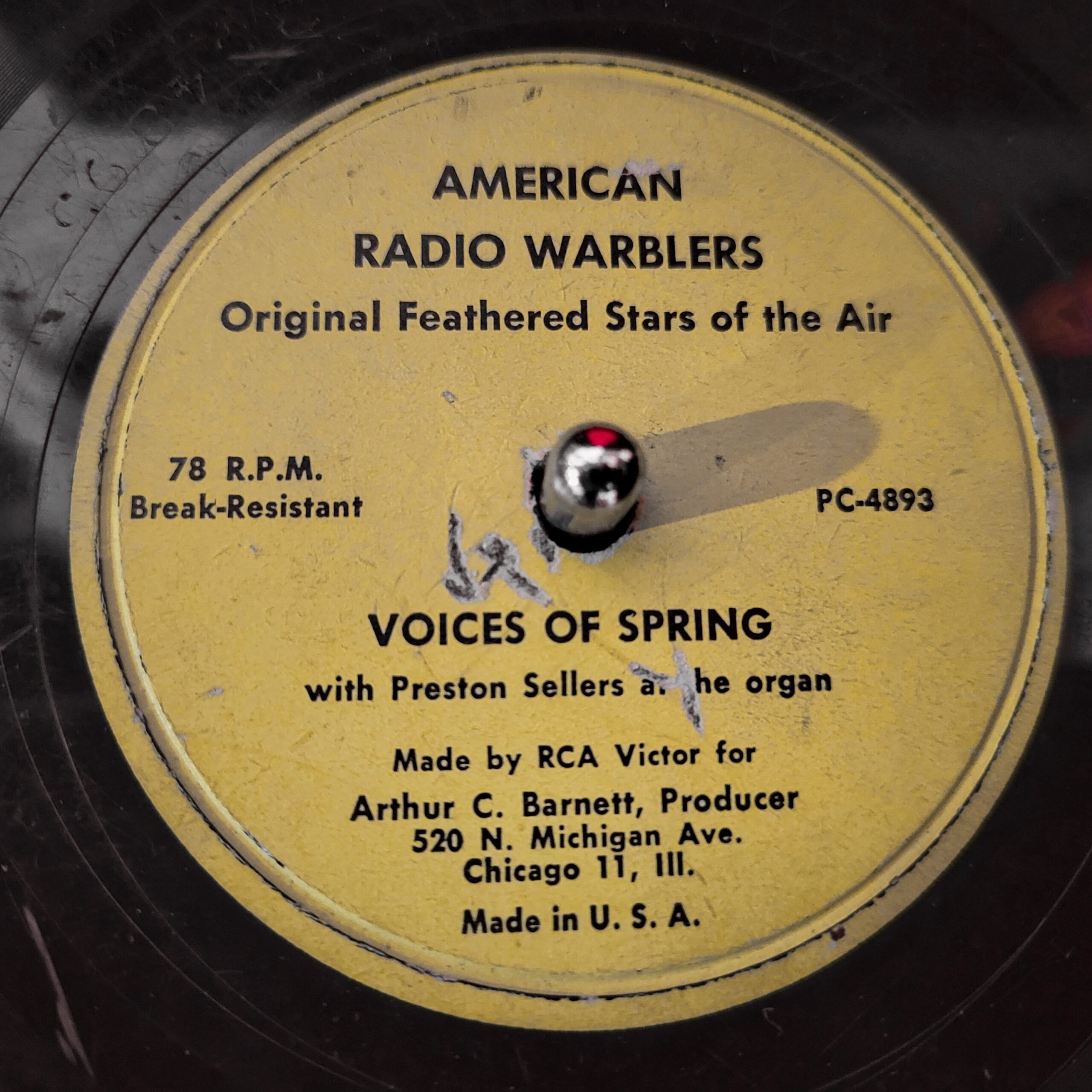The “American Radio Warblers” program, a radio staple from 1937 to 1952, holds a unique place in broadcasting history. Featuring live canaries serenading listeners every Sunday afternoon, the program captured the hearts of audiences with its novel concept and charming soundscapes. However, the impact of the “American Radio Warblers” extended beyond the airwaves. Accompanying the program was a dedicated record label, offering listeners the opportunity to bring the melodious performances of these feathered stars into their homes.

The “American Radio Warblers” record label emerged during a period of significant cultural fascination with birds and their songs. During the early and mid-20th century, bird ownership enjoyed widespread popularity in the United States. Many families kept caged songbirds, not just for their aesthetic beauty but also for their melodic contributions to the domestic soundscape. This enthusiasm fueled a thriving market for bird-related products, including specialized cages, food, and recordings of bird songs.
In 1929, amidst this cultural context, the “American Radio Warblers” program debuted on Chicago radio station WBBM. The brainchild of Arthur C. Barnett, the program featured a unique concept: a chorus of ten live canaries, positioned near a studio organ, “performing” alongside organist Preston Sellers. The program’s immediate success led to its expansion onto the national Mutual Broadcasting System and the creation of the “American Radio Warblers” record label. These recordings offered listeners a chance to experience the program’s charm and novelty beyond the limitations of live broadcasts, further solidifying the “American Radio Warblers” as a cultural phenomenon.
The “American Radio Warblers” record label primarily released recordings on the then-popular format of 78 rpm shellac discs. These single-sided records typically featured a single song or a medley on each side, offering a concise listening experience. Later releases also appeared in the 45 rpm format, catering to the evolving technological landscape.
The recordings themselves captured the essence of the radio program. The canaries’ melodic singing takes center stage, showcasing their varied vocalizations and natural charm. While the primary focus remains on the birdsong, organ accompaniment by Preston Sellers adds a layer of musicality and structure to the recordings. The sound quality, considering the era and recording technology, is surprisingly clear, allowing listeners to appreciate the intricate details of the canaries’ songs.
Beyond the music itself, the records offered additional insights into the “American Radio Warblers” experience. Liner notes often provided information about the featured canaries, their training, and the program’s production process. Additionally, some releases included promotional materials or advertisements for bird-related products, further reflecting the cultural context surrounding the program and its recordings.
The “American Radio Warblers” record label holds a unique position within the broader cultural landscape of the mid-20th century. Their recordings transcended the realm of mere bird song, offering a novelty factor that captivated audiences. The idea of listening to live canaries performing alongside an organist was unlike anything else available at the time, making the records conversation starters and cherished additions to home entertainment collections.
The appeal of the “American Radio Warblers” records extended beyond novelty. Bird enthusiasts found them a valuable resource for appreciating the diverse vocalizations of different canary breeds. Music collectors saw them as unique pieces of audio history, capturing a specific moment in radio broadcasting and popular culture. Additionally, the records held a certain charm and nostalgia for many listeners, evoking memories of childhood homes and the soothing sounds of birdsong.
The “American Radio Warblers” record label, though a niche player in the broader music industry, carved a unique and enduring place in history. Emerging from a cultural fascination with birdsong, the label offered listeners a captivating experience – the chance to bring the charming melodies of live canaries into their homes. The recordings, characterized by clear audio, distinctive organ accompaniment, and occasional informative liner notes, transcended mere novelty, appealing to bird enthusiasts, music collectors, and those seeking a touch of nostalgia.
